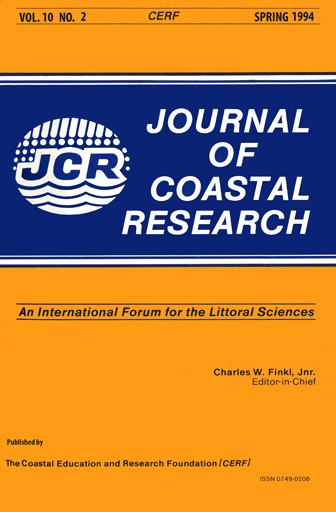Estimation of Bottom Stress and Roughness in Lower Chesapeake Bay by the Inertial Dissipation Method
Keywords:
Chesapeake Bay, estuaries, boundary layer, Kolmogorov spectrum, shear stressAbstract
Shear velocities and associated hydraulic roughness lengths, z0 and drag coefficients CD (100) were estimated for the bay-stem plains environment of lower Chesapeake Bay (depth 11-12 m) under calm conditions during winter. A modified inertial dissipation method was applied to field data obtained from an array of electromagnetic current meters supported by a bottom-mounted tripod. A wave-current boundary layer model (GRANT and MADSEN, 1986) was applied to the same set of data. The results show that wen wave activity is minimal, the bed is dominated by biologic roughness with z0 and CD (100) values of about 0.05 cm and 2.7 X 10-3 respectively.Downloads
Published
1994-04-20
Issue
Section
Articles


